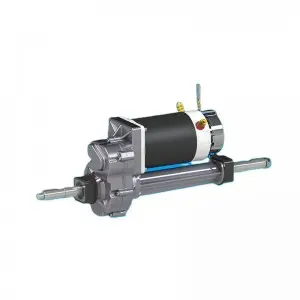In the automotive industry, technological advancements have played a major role in improving the efficiency and performance of vehicles. One of the innovations that has revolutionized the way we drive is the transaxle control module. While enthusiasts may be familiar with the term, many drivers still don’t realize how important it is to the smooth running of their vehicles. In this blog, we will break down the concept of a transaxle control module, explaining its purpose, function and importance.
Learn about Transaxle Control Modules:
The Transaxle Control Module (TCM) is an integral part of modern vehicles equipped with automatic transmissions. It acts as the brains behind the transport system, overseeing and regulating its operation. In short, the TCM manages gear changes, ensuring seamless power transfer between the engine and the wheels.
Functions of the transaxle control module:
The TCM is constantly receiving data from various sensors strategically placed throughout the vehicle, such as wheel speed sensors, throttle position sensors, and engine speed sensors. By analyzing this data, the module determines the optimal gear ratio for the current driving conditions, taking into account factors such as vehicle speed, engine load and driving style. The TCM then sends signals to control the solenoids, kickdown switch and shift actuators to perform the necessary shifts smoothly and precisely.
Importance to vehicle performance:
Efficient gear changes are critical to optimizing fuel consumption, power output and vehicle performance. TCM ensures the vehicle is operating in the correct gear at the correct time, improving fuel efficiency and the overall driving experience. By continuously monitoring input parameters, the TCM also prevents unwanted gear chatter, reducing wear and extending the life of the driveline.
Diagnostic ability:
In addition to its primary function of managing gear changes, the TCM also acts as a diagnostic tool. When something goes wrong within the transmission system, the module can usually detect the problem, store the corresponding fault code, and illuminate the dreaded “check engine” light. These codes can then be read by trained professionals using diagnostic tools, helping to accurately diagnose and subsequently fix problems.
Maintenance and Troubleshooting:
While TCMs are designed to be rugged and reliable, external factors such as electromagnetic interference, water damage, or electrical short circuits can cause them to fail. Regular vehicle maintenance, including inspection and cleaning of transmission sensors and connectors, can help prevent such problems. In the event of a failure, it is essential that the TCM be diagnosed and repaired by a qualified technician to avoid further damage to the transmission system.
The transaxle control module is an often overlooked but vital component in modern automatic transmission vehicles. Its ability to precisely manage gear shifts, improve fuel efficiency and diagnose transmission faults plays a key role in ensuring a smooth, enjoyable driving experience. As a vehicle owner, understanding the importance of your TCM enables you to take the necessary maintenance steps to optimize its performance and life, allowing you to get the most out of your investment and enjoy a trouble-free driving experience.
Post time: Aug-02-2023


